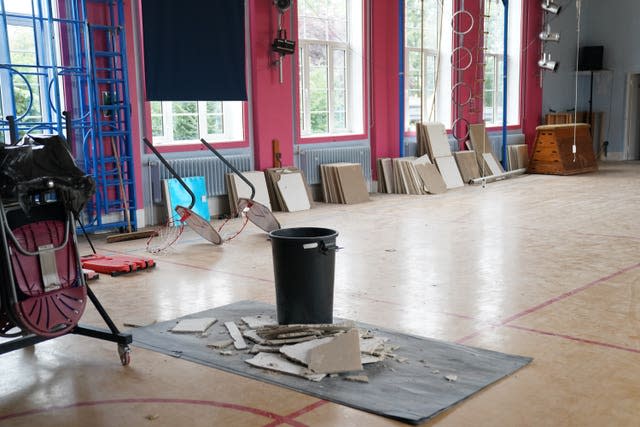Ministers facing calls for transparency over scale of Raac in public buildings
Ministers are facing calls for transparency over the scale of aerated concrete in public buildings after schools were forced to shut classrooms just before the new term.
Experts have warned that the crisis over reinforced autoclaved aerated concrete (Raac) could extend beyond the education sector – with healthcare settings, courts and offices also potentially at risk.
Chairwoman of Parliament’s Public Accounts Committee Dame Meg Hillier warned Raac is just “the tip of the iceberg” of a crumbling school estate, describing the state of some public buildings was “jaw-dropping”.
Writing in The Times, the Labour MP said she had visited a hospital where heavy patients had to be treated on the ground floor because of the risk of roof failure.

Opposition parties are demanding information about the scale of Raac across the public sector estate, with Labour calling for an “urgent audit”.
It comes after 104 schools and colleges were told by the Department for Education to partially or fully shut buildings just as pupils prepare to return after the summer holidays.
Though not confirmed, it is estimated that around 24 schools in England have been told to close entirely because of the presence of Raac, the PA news agency understands, and schools minister Nick Gibb has admitted more could be asked to shut classrooms.

Mr Gibb said that a collapse of a beam that had been considered safe over the summer sparked an urgent rethink on whether buildings with the aerated concrete could remain open.
He insisted schools were contacting affected families and told the BBC’s Today programme “we will publish a list”, but only once they are in a “stable place”.
But the problem could be far wider, with other buildings at risk of sudden collapse if Raac is not removed, specialists said.
Dame Meg questioned “why it has been left to deteriorate for so long” while millions of pounds are being spent on temporary measures to mitigate the risk.
“In both schools and hospitals, there hasn’t been enough money going into buildings and equipment,” she told Times Radio.
She said the costs of working around the problem – by using props to support existing structures and conducting surveys on Raac-affected areas – were “eye-watering and wasteful”.

Engineers have warned that the problem could be far wider, with hospitals, prisons, courts and offices potentially at risk due to the use of Raac up to the mid-1990s.
Labour has called for an “urgent audit” to identify the risk of the concrete across the public sector estate, while the Liberal Democrats said the public and NHS staff need “urgent clarity” over whether hospital wards and buildings could be forced to close.
Shadow culture secretary Lucy Powell said the crisis would damage the education of children at a primary school in a deprived area of her constituency which has been forced to close its hall.
“These are some of the poorest, less ready-for-school children that we have in this country and they really need their schools to be open,” the Manchester Central MP told BBC Breakfast.
Raac is thought to be present in buildings at 34 hospitals across England, and the Government has pledged seven of the worst affected will be replaced by 2030.

 Yahoo News
Yahoo News 
